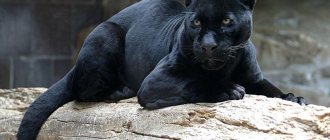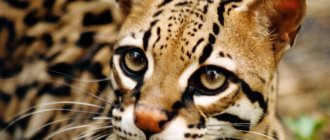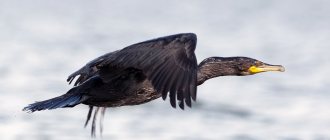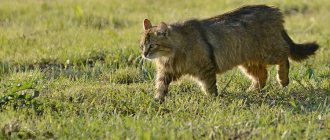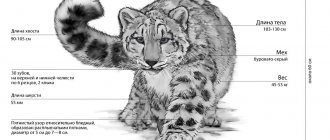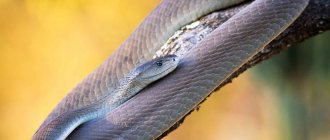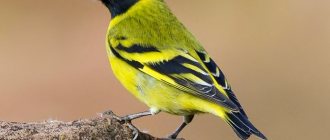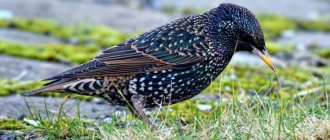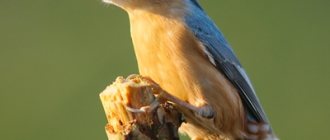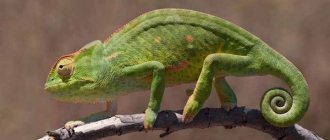What does it look like
This is a relatively small animal, externally resembling a porcupine or a hedgehog, since the body is covered with a thick layer of hair in the form of needles up to 5–6 cm. Dimensions in length are 30 cm. The animal has 2 pairs of short, but strong and fleshy paws with large claws, which allows them to dig deep holes.
The head is a continuation of the body, there is no neck. The muzzle is beak-shaped, with a small mouth located at its tip. The animal has no teeth, so it uses the friction of the tongue against the palate to chew food. The eyes are small and have not only eyelids, but also a special nictitating membrane.
It is one of the few mammals that lay eggs
The mammal has a tail, although it is difficult to see as it is covered in spines. The animal is a monotreme, that is, all waste products (urine, sexual secretions and feces) exit through one opening - the cloaca.
Origin of the species and description
Photo: Echidna
Echidna is one of the most ancient animals on our planet. She belongs to a special subclass of primordial animals. The only order here is monotremes (in another version - oviparous), which includes five species of animals. Two of them are the echidna and the proechidna of the echidna family. Three other species from the platypus family are no less interesting animals.
Echidnovae developed along a separate branch of evolution, which appeared about 180 million years ago and descended from the oldest animals on Earth - southern mammals. They found the Jurassic period and dinosaurs. Perhaps 25 million years ago, echidnas came to land from the water. They retained receptors for underwater hunting, capturing the electrical fields of moving animals. The ability to swim well on and under water has also been preserved.
The monotreme class is characterized by the excretion of the genitourinary system and intestines into one common cavity - the cloaca. This is not typical for mammals, and makes echidnas stand out among them.
The echidna has two subspecies:
- Australian;
- Tasmanian.
The main difference is in the territories occupied and the slightly larger size of the Tasmanian echidna compared to the Australian one. Sometimes the former have a larger amount of fur.
Where he lives, lifestyle
These mammals spend most of their lives alone. The exception is the mating season during the winter months. Each individual lives in a certain territory, where it hunts and finds food. This is predominantly wooded or mountainous terrain; the animal avoids plains. They do not have permanent housing. Instead, they wander around their territory in search of food, resting in random places. The animal digs well and can swim.
The animal has excellent vision, which reacts to movement. When danger arises, it tends to hide in holes, dense thickets or crevices in rocks. If the area is open, it buries itself in the ground, leaving the upper part of its body covered with needles on the surface. When the ground is too hard, the animal curls up into a ball like a hedgehog.
Animals are more active on summer nights
These mammals have almost no natural enemies. An adult can only be eaten by wild dogs, dingoes and foxes. They try to attack it from the side of the abdomen, since there are no needles there, and unfold the “ball”. Young individuals do not yet have strong and powerful needles, so they are also hunted by other predators, for example, large monitor lizards.
Natural enemies of echidnas
Photo: Echidna animal
Few people are interested in the echidna, because it is prickly and harmful, unfriendly. If something happens, she will curl up in a ball and there is no point in even approaching her. The good news is that even for a person who could easily find a way to hunt an echidna, it is not interesting. Leather with needles is not applicable anywhere and they don’t even try to get it. The meat has already been tested and found to be tasteless. Therefore, humans can only catch echidnas for zoos and research. It doesn't take many individuals to do this.
Still, several predators are capable of hunting the echidna:
- dingo dogs;
- predatory cats;
- pigs;
- foxes;
- monitor lizards.
They can kill an echidna on a flat, hard surface if they manage to grab the belly area. Then the animal does not resist and predators eat it, avoiding the needle. But, of course, echidnas don’t give up so easily; they run, although not very fast. They try to hide in caves, holes, holes in roots and trees. If there are none nearby, they can begin to dig on the spot and bury themselves so that only needles from the back stick out on the surface. In addition to living threats, there is another danger for echidnas - highways. Cars often hit them at night.
What does an echidna eat?
The basis of nutrition is ants and termites, the search for which takes most of the life. Having discovered an anthill, the animal begins to dig it out, licking the ants with its sticky tongue. The long muzzle simplifies the process and also helps to dig in the ground.
The mammal mixes a lot of sand, dust, grass and dry wood into its food
Strong paws and large claws allow them to strip bark from trees or destroy termite mounds. The animal is capable of moving large stones that exceed its own weight. In rare cases, the animal digs turf or thickets of moss, under which there may be larvae or insects.
While feeding, they swallow large amounts of soil and small stones. This helps you digest food better. The animal does not drink water at all.
Reproduction
Reliable data on the reproduction of these animals was obtained only in 2003 after 12 years of continuous research. The mating season for these egg-laying animals begins in May and ends in September. It is winter in the Southern Hemisphere. During the mating season, animals gather in groups of 4–5 individuals, including one female and the rest are males. To attract males, the female uses a special secretion secreted from the cloaca, with which she rubs the ground.
During the breeding season, animals walk in groups, always led by a female. They always hunt and relax together. Other individuals are not allowed in the group.
Males constantly try to court the female by nuzzling her, and after about 3-4 weeks she allows one or more males to approach her. The female lies on her back, showing her readiness. The males, in turn, begin to circle around her, digging up the ground up to 30 cm deep.
After the trench is ready, the males try to push each other out. In the end, the strongest wins, and fertilizes the female. Mating occurs on its side in a lying position and lasts up to 1 hour.
The duration of gestation depends on the air temperature. During the hot season, pregnancy is shorter and lasts 3–4 weeks. At the end of the period, the female lays an egg and places it in a pouch on her abdomen. This is a kind of fold designed specifically for bearing an egg.
Only five zoos in the world managed to produce offspring
After 9–10 days, the egg hatches into a baby weighing about 0.5 g and measuring no more than 15 mm. The newborn is not yet fully developed and is not adapted to life, therefore, with the help of its paws, it is secured in the upper part of the mother’s pouch, where the mammary glands are located. This area is called the “milky field”. The cub licks the mother's milk with its tongue, which, by the way, is pink.
The mother carries the puggle (the so-called baby) in a pouch for up to 2 months. During this time, it gains weight up to 400 g, which is an absolute record among all mammals in terms of growth rate. The mother herself pushes the newborn echidna out when the spines begin to grow, causing inconvenience.
Until now, scientists do not know how the female places the egg in the pouch. Her legs are too short to do this. Perhaps the animal twists itself in a special way, and the egg goes directly from the cloaca into the pouch.
However, the mother still does not abandon her cub and digs a hole for him somewhere under the roots of a tree. She visits him twice a week to feed him milk. The process continues for up to six months, until the cub becomes independent.
It is during the period of feeding the cub that the highest mortality rate is observed. Puggles are still weak and cannot stand up for themselves. As protection, they use special secretions with a pungent and unpleasant odor. In addition, teenage animals behave extremely quietly, without attracting attention to themselves.
January 21
— 21st day of the year in the Gregorian calendar.
There are 344 days left until the end of the year (345 days in leap years). Holidays January 21
- Engineering Troops Day (memorable day);
- Graduate Student Day;
- Hug Day.
National
- Dominican Republic, Saint Altagracia Day.
Religious
- Catholicism commemorates the martyr Agnes of Rome;
- memory of the holy martyr Fructuosus of Tarragona;
- in memory of Meinrad of Einsiedel.
- Orthodoxy in memory of the martyr Abo of Tbilisi (786);
- memory of Patriarch Atticus of Constantinople;
- memory of the Hieromartyr Victor the Presbyter (1937);
- memory of the holy martyr Vladimir the presbyter (1938);
- memory of St. George Khozevit (VII);
- memory of Bishop Gregory of Mysia;
- memory of the Venerable Martyr Gregory, wonderworker of Pechersk (1093);
- memory of St. Gregory, recluse of Pechersk (XIII-XIV);
- memory of the Hieromartyr Demetrius the Presbyter (1938);
- memory of the martyr Eugene;
- memory of the Venerable Bishop Emilian of Cyzicus, confessor (IX);
- memory of Zotik;
- memory of the Monk Elijah of Egypt, the hermit (IV);
- memory of the holy martyr Isidore the presbyter and with him the 72 victims in Yuriev Livlyandsky (1472);
- memory of the martyrs Julian, Kelsia, Anthony, Anastasia, martyrs Basilissa, Marionilla, seven youths and 20 warriors (313);
- memory of the Hieromartyr Carterius, presbyter of Caesarea of Cappodacia (304);
- memory of Patriarch Cyrus of Constantinople;
- memory of the martyr Michael (1938);
- memory of St. Michael, confessor, presbyter (1941);
- memory of St. Paisius of Uglich, abbot (1504);
- memory of Theoktistus;
- memory of the martyr Theophilos the deacon and Helladius of Libya (IV);
- memory of the Hieromartyr Theophilus of Libya, deacon;
- memory of the Venerable Domnika of Constantinople, abbess (c. 474).
Name day
- Catholic: Agnes, Maynard, Fructuoso
- Orthodox: Abo, Anastasius, Anthony/Anton, Atticus, Vasilisa, Victor, Vladimir, George, Gregory, Dmitry, Domna, Evgeniy, Emelyan/Emil, Zotik, Ilya, Isidore, Carterius, Kelsiy/Kelsiy, Cyrus, Marionilla, Mikhail, Paisius, Theoktist, Theophilus, Helladius/Helladius, Julian.
Events of January 21
- 1698 - leaving the Grand Embassy in Holland, Peter I arrived in London with volunteers.
- 1701 - by decree of Peter I, the School of Pushkar Prikaz was opened in Moscow.
- 1775 - Emelyan Ivanovich Pugachev was executed on Bolotnaya Square in Moscow.
- 1793 - The Great French Revolution: Louis XVI was executed by court order, accused of conspiracy against the freedom of the nation and against the general security of the state.
- 1854 - The RMS Tayleur was shipwrecked near Lambay Island, killing 362 people.
- 1920 - The Paris Peace Conference following the First World War ended
- 1925 - recognition of the USSR by Japan. Japanese troops leave the Far East.
- 1945 - creation of the Main Botanical Garden of the USSR Academy of Sciences in Moscow.
- 1968 - Beginning of the Siege of Khe Sanh, one of the most famous and controversial battles of the Vietnam War.
- 1976 - The Concorde airliner took off on its first commercial flight, from London to Bahrain.
- 1977 - Abortion is legalized in Italy.
- 1981 - The first DeLorean DMC-12 rolls off the assembly line at the DMC Dunmurry factory in Northern Ireland.
- 2003 - A 7.6 magnitude earthquake occurred in the state of Colima, Mexico. 29 people were killed, 300 were injured, and about 10,000 were left homeless. The earthquake destroyed 2,005 structures and damaged 6,615. Highways and the port of Manzanillo were also severely damaged.
- 2006 - Salier was discovered buried in a lead box in a forest near the Austrian town of Zwettl.
Born on January 21
- 1818 - Adam Kirkor, Lithuanian and Belarusian archaeologist and publisher (d. 1886).
- 1824 - Thomas "Stonewall" Jackson - General of the Confederate Army during the American Civil War (d. 1863).
- 1855 - John Browning, American inventor, weapons designer (d. 1926).
- 1861 - Georges Méliès, one of the founders of cinema (d. 1938).
- 1869 - Grigory Rasputin, unofficial confessor and favorite of the family of Nicholas II (d. 1916).
- 1882 - Pavel Aleksandrovich Florensky, Russian religious philosopher and scientist (d. 1937).
- 1885 - Umberto Nobile, Italian airship designer and polar explorer (d. 1978).
- 1903 - Igor Vasilyevich Kurchatov, nuclear physicist and academician, creator of the Soviet atomic bomb (d. 1960).
- 1905 - Wanda Wasilewska, Polish and Soviet writer (d. 1964). Christian Dior, French couturier. The Dior Fashion House has been and remains one of the leading in Europe.
- 1906 - Igor Aleksandrovich Moiseev, Russian choreographer. (d. 2007).
- 1908 - Bengt Georg Daniel Strömgren, Danish astronomer and astrophysicist (d. 1987).
- 1912 - Pavel Springfeld - Soviet theater and film actor, Honored Artist of the RSFSR ("Taras Shevchenko", "Admiral Ushakov", "Hearts of Four", etc.; d. 1971).
- 1920 - Nikolai Nikolaevich Trofimov, actor of the Bolshoi Drama Theater (St. Petersburg) and cinema, People's Artist of the USSR (d. 2005).
- 1924 - Benny Hill, British comedian (d. 1992).
- 1941 – Placido Domingo, Spanish singer.
- 1941 - Evgeny Shcherbakov, Soviet ballet dancer, choreographer, teacher, film actor.
- 1949 - Alexander Kharchikov, Russian bard and public figure.
- 1956 – Geena Davis, American actress, producer.
- 1957 - Tatyana Bozhok, Soviet and Russian theater and film actress.
- 1960 - Dmitry Kharatyan, Russian actor.
- 1965 - Robert Del Naya, English musician, singer and graffiti artist, one of the founders of the band Massive Attack.
- 1974 - Andrey Kuznetsov, Russian theater and film actor.
- 1976 – Emma Bunton, television presenter, former member of the all-female pop group the Spice Girls.
- 1979 - Mikhail Zhitnyakov, Russian rock musician, vocalist of the group Aria.
- 1981 – Michel Telo, Brazilian singer.
- 1983 - Svetlana Khodchenkova, Russian actress.
- 1985 - Sasha Pivovarova, Russian supermodel.
- 1989 - Henrikh Mkhitaryan, Armenian footballer, midfielder of the Borussia Dortmund club and the Armenian national team.
- 2004 - Ingrid-Alexandra, eldest daughter of Crown Prince Haakon of Norway and his wife Mette-Marit.
Died on January 21
- 1059 - Michael Cerularius, Patriarch of Constantinople.
- 1530 - Andrea del Sarto (b. 1486), Florentine artist, representative of the Florentine school of the High Renaissance.
- 1603 - Erasmus Glitschner (born 1528), Polish writer, teacher, preacher and theologian.
- 1609 - Joseph Justus Scaliger (b. 1540), one of the founders of modern historical chronology.
- 1744 - Giambattista Vico (b. 1668), Italian philosopher, founder of the philosophy of history and ethnic psychology.
- 1775 - Emelyan Ivanovich Pugachev (b. ca. 1742), leader of the Cossack-peasant uprising, was executed.
- 1789 - Paul Henri Holbach (b. 1723), French materialist philosopher.
- 1793 - Louis XVI (b. 1754), king of France.
- 1803 - Kirill Grigorievich Razumovsky (b. 1728), count, president of the Imperial Academy of Sciences, last hetman of the Zaporozhye Army.
- 1832 - Boguslav Tablitz (b. 1769), Czech-Slovak writer, priest.
- 1870 - Alexander Herzen (b. 1812), Russian writer, revolutionary, philosopher and publicist.
- 1872 - Petros Duryan (b. 1851), Armenian poet.
- 1873 - Elena Pavlovna (Frederica of Württemberg), Russian Grand Duchess, wife of Grand Duke Mikhail Pavlovich, philanthropist, statesman and public figure (b. 1807).
- 1879 - Lyuben Karavelov (b. 1837), Bulgarian writer.
- 1892 - John Adams, British mathematician who calculated the existence and position of Neptune (b. 1819).
- 1919 - Mikhail Ivanovich Tugan-Baranovsky, scientist-economist, statesman and public figure of Ukraine
- 1924 - Vladimir Ilyich Lenin (real name Ulyanov), political and statesman, successor of Marxism and founder of the USSR (b. 1870).
- 1926 - Camillo Golgi (b. 1843), Italian physiologist, histologist and pathologist, winner of the 1906 Nobel Prize in Physiology or Medicine.
- 1927 - Mitrofan Efimovich Pyatnitsky, founder and director of the Russian Folk Choir (b. 1864).
- 1933 - George Augustus Moore, Irish poet, novelist, playwright and critic (b. 1852).
- 1940 - Mikhail Erdenko, founder of the Gypsy Erdenko dynasty, violinist and composer, Honored Artist of the RSFSR.
- 1950 - George Orwell (real name Eric Arthur Blair) (b. 1903), English writer and publicist, author of the novel “1984”.
- 1959 - Cecil Blount DeMille (b. 1881), American film director, film creator, winner of two Oscars.
- 1961 - Blaise Cendrars (real name Frédéric-Louis Sauzé) (b. 1887), French writer.
- 1965 - Reino Helismaa (b. 1913), Finnish singer and songwriter.
- 1968 - Alexander Arbuzov (b. 1877), chemist, founder of the Russian school of organophosphorus compounds.
- 1979 - Alexey Nikolaevich Leontiev (born 1903), Soviet psychologist, founder of activity theory.
- 1986 - Alyosha Dmitrievich, popular gypsy chansonnier (b. 1913)
- 1997 - Thomas Andrew Parker, manager of Elvis Presley (b. 1909).
- 2000 - Sofya Stanislavovna Pilyavskaya (b. 1911), actress of the Moscow Art Theater, People's Artist of the USSR ("At the Beginning of the Century", "Anna Karenina", "The Living Corpse", "Pokrovsky Gates").
- 2006 - Ibrahim Rugova, President of Kosovo (2002-2006).
Folk calendar, signs and folklore of Russia
Emelyan Perezimniki. Emelya Kumishny. Omelyan - shone with God's light.
- In Rus', on this day it was customary to treat godfather and godfather; it was believed that this would bring health to children.
- And in response, they brought a bar of soap and a towel with the words: “Here’s some soap and white underwear for your godson, godfather.”
- When bathing the child, they washed him with this soap and said:
- - “The king of the sea, and the king of Dvina, and the king of Pinega, give water to the belly, to the health of the servant of God (the name of the child), to his purity, to his beauty.”
- - “Water is off a duck’s back, but thinness is on a son’s (daughter’s) skin (by thinness they meant illness).”
- In the old days, on long dark and cold evenings they said: “Shallow, Emelya, your week.”
- If there is a south wind on Emelyan, then the summer will be thunderous.
- If it was a clear day, then it promised a dry summer.
Information sources:
- ru.wikipedia.org - January 21 - Wikipedia;
- calend.ru - January 21 - what holiday is today?
- kakoysegodnyaprazdnik.ru - what holidays are on January 21?
Interesting facts about the mammal
With ants, the animal receives 70% moisture
Let's highlight a few interesting facts:
- The Australian echidna was first described in 1792 by British zoologist George Shaw. He mistakenly classified it as an anteater. Ten years later, another British scientist, Edward Home, discovered a feature in the form of just one passage and created a new order, Monotremes. By the way, this also includes the platypus.
- This mammal can be confused with its close relative, the platypus. It differs from the platypus by the presence of needles and the absence of a beak. The lifestyle and habitat are also different. Platypuses are closer in characteristics to reptiles, although they are mammals.
- This animal has special receptors on its nose that help detect electromagnetic vibrations from prey or its fellows.
- They lay eggs similarly to birds, that is, through the cloaca.
- The average life expectancy in natural conditions is 15 years. In captivity, animals become long-lived, reaching an age of 40–50 years.
- The female's milk is pink. This is due to the high iron content.
- The male's penis has as many as 4 heads.
- Capable of licking with their tongue up to 100 times per minute.
- Fleas on an animal reach a size of 4 mm.
- When temperatures drop sharply, they go into hibernation, which can last up to several months. Subcutaneous fat is used as nutrition at this time.
- The needles are so sharp that even the slightest touch can puncture or cut human skin.
- Males have spurs on their hind legs that contain a poisonous secretion. During the entire observation period, it was not observed that the males used it in any way.
- They are kept in zoos around the world, but animals do not breed in captivity.
- The brain is primitive. However, the animal is extremely curious.
- The albino echidna occurs once in ten thousand.
The echidna is an unusual and interesting animal. It can only be found in Australia and nearby islands. The animal is not dangerous to humans and, when encountered, curls up into a ball or tries to run away into the thickets. You should not pick it up, as this can cause damage to the skin due to the sharp needles.
Appearance and features
Photo: Echidna animal
Echidnas are small animals. Their body weight varies from two to three kilograms to five to seven kilograms. The body length usually ranges from 30 to 50 cm, but sometimes, according to some data, it can reach 70 cm. But it is quite possible that such large sizes no longer refer to echidnas, but to proechidnas - this data is not yet completely clear systematized.
The animal has a small tail, which often looks like just a small protrusion. The head is small, narrow, pointed, smoothly blending into the body. There is a long, narrow, straight, cylindrical beak-trunk, up to 75 mm in length. There are no teeth, and the mouth opens only a few millimeters. A long sticky tongue protrudes from it, to which food sticks.
Video: Echidna
There are no auricles, however, animals have excellent hearing. The echidna's sense of smell is also very developed, but its vision is not very good. Although, according to some reports, it is written that the echidna’s eyesight is sharp, but the opinions of scientists are divided on this issue. An amazing feature of echidnas is the presence of skin in the mouth equipped with recipes - electrolocators. Modern mammals, as a rule, do not have such an ability to sense the electrical fields of surrounding animals, but the echidna has retained it.
The paws are small with five toes each; at the end the toes are equipped with powerful flat claws. There is one particularly long claw on the hind legs, with which the animal itches and gets rid of parasites. The whole body is covered with coarse hair; it is shorter on the muzzle and paws. The body is also covered with hollow needles up to six centimeters long. The color of the fur is brown, black, the needles at the roots are yellow and at the ends are black, but they can be entirely yellow.
Echidnas have very developed muscles; despite such small body sizes, they are capable of seriously turning around the objects around them. Usually she does this with anthills, but there are cases when an individual that found itself in a person’s home moved apart heavy furniture.

